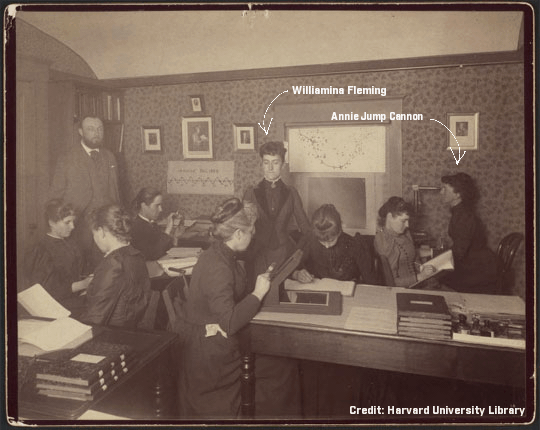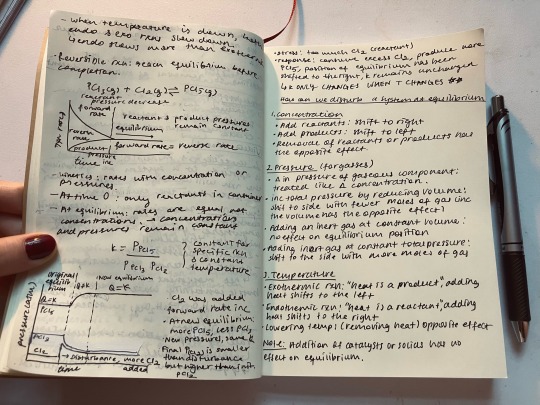Text
universities linking to mental health resources in their press releases about student encampments r so disgusting like they constantly pivot to “mental health” as the framework for presenting ideological conflict, people are “understandably upset” about “difficult topics” and then they link to suicide hotlines and social worker appointment schedules like the thing people opposing genocide and apartheid really need is a therapist. & I know this is nothing new like institutions use psychiatry as a tool of controlling and managing oppressed people everywhere but it’s just another reminder in a sea of a thousand reminders that HR offices are one of the frontline ghouls of this fucking death spiral of imperialism. all to protect the right to massacre children
7K notes
·
View notes
Text
calc ii final tomorrow
#haven’t studied which is admittedly cocky#but I’ve been in a weird slump#demotivated and demoralized#life goes on though!#daily life of the nerd#oh. unrelated but#my academic friend gossiped to me about robert mcruer this wknd#disappointed but not surprised. queer men r the weakest link#still respect him as a scholar.
0 notes
Text
actual criticisms of academia:
cost of education acting as class barrier
exploitation of graduate workers
colonialist past and present
ties to military industrial complex
danger of power structure entrenching and justifying orthodox views on social issues
criticisms of academia that get made:
those damn ivory tower academics are wasting money learning about things
22K notes
·
View notes
Text
Yet problems in the legitimacy of psychiatry's vocation have remained, and reached crisis point at the cusp of deinstitutionalisation in the 1970s. At the time, a number of significant studies demonstrated the profession's inherent tendency to label people as "mentally ill," to stigmatise everyday aspects of a person’s behaviour as signs of pathology, and to make judgements on a person's mental health status based on subjective judgements rather than objective criteria.
The study that had the most direct impact on the psychiatric profession—as well as public consciousness—at this time was David Rosenhan's (1973) classic research On Being Sane in Insane Places which found that psychiatrists could not distinguish between "real" and "pseudo" patients presenting at psychiatric hospitals in the United States. All of Rosenhan's "pseudo" patients (college students/researchers involved in the experiment) were admitted and given a psychotic label, and all the subsequent behaviour of the researchers—including their note-taking—was labelled by staff as further symptoms of their disorder. This research was a culmination of earlier studies on labelling and mental illness which had begun in the 1960s with Irving Goffman (1961) and Thomas Scheff (1966). Goffman's ethnographic study of psychiatric incarceration demonstrated many of the features which Rosenhan's study would later succinctly outline, including the arbitrary nature of psychiatric assessment, the labelling of patient behaviour as further evidence of "mental illness," and the processes of institutional conformity by which the inmates learned to accept such labels if they wanted to have any chance of being released from the institution at a later date. Scheff's work on diagnostic decision making in psychiatry formulated a general labelling theory for the sociology of mental health. Again, his research found that psychiatrists made arbitrary and subjective decisions on those designated as "mentally ill," sometimes retaining people in institutions even when there was no evidence to support such a decision. Psychiatrists, he argued, relied on a common sense set of beliefs and practices rather than observable, scientific evidence. Scheff concluded that the labelling of a person with a "mental illness" was contingent on the violation of social norms by low-status rule-breakers who are judged by higher status agents of social control (in this case, the psychiatric profession). Thus, according to these studies, the nature of "mental illness" is not a fixed object of medical study but rather a form of "social deviance"—a moral marker of societal infraction by the powerful inflicted on the powerless. This situation is summated in Becker's general theory of social deviance which stated that "deviance is not a quality of the act the person commits, but rather a consequence of the application by others of rules and sanctions to an 'offender.' The deviant is one to whom that label has successfully been applied; deviant behavior is behavior that people so label".
Bruce M.Z. Cohen, Psychiatric Hegemony: A Marxist Theory of Mental Illness
619 notes
·
View notes
Text
As I keep shouting into the void, pathologizers love shifting discussion about material conditions into discussion about emotional states.
I rant approximately once a week about how the brain maturity myth transmuted “Young adults are too poor to move out of their parents’ homes or have children of their own” into “Young adults are too emotionally and neurologically immature to move out of their parents’ homes or have children of their own.”
I’ve also talked about the misuse of “enabling” and “trauma” and “dopamine” .
And this is a pattern – people coin terms and concepts to describe material problems, and pathologization culture shifts them to be about problems in the brain or psyche of the person experiencing them. Now we’re talking about neurochemicals, frontal lobes, and self-esteem instead of talking about wages, wealth distribution, and civil rights. Now we can say that poor, oppressed, and exploited people are suffering from a neurological/emotional defect that makes them not know what’s best for themselves, so they don’t need or deserve rights or money.
Here are some terms that have been so horribly misused by mental health culture that we’ve almost entirely forgotten that they were originally materialist critiques.
Codependency
What it originally referred to: A non-addicted person being overly “helpful” to an addicted partner or relative, often out of financial desperation. For example: Making sure your alcoholic husband gets to work in the morning (even though he’s an adult who should be responsible for himself) because if he loses his job, you’ll lose your home. https://www.nytimes.com/2022/07/08/opinion/codependency-addiction-recovery.html
What it’s been distorted into: Being “clingy,” being “too emotionally needy,” wanting things like affection and quality time from a partner. A way of pathologizing people, especially young women, for wanting things like love and commitment in a romantic relationship.
Compulsory Heterosexuality
What it originally referred to: In the 1980 in essay "Compulsory Heterosexuality and Lesbian Existence," https://www.journals.uchicago.edu/doi/abs/10.1086/493756 Adrienne Rich described compulsory heterosexuality as a set of social conditions that coerce women into heterosexual relationships and prioritize those relationships over relationships between women (both romantic and platonic). She also defines “lesbian” much more broadly than current discourse does, encompassing a wide variety of romantic and platonic relationships between women. While she does suggest that women who identify as heterosexual might be doing so out of unquestioned social norms, this is not the primary point she’s making.
What it’s been distorted into: The patronizing, biphobic idea that lesbians somehow falsely believe themselves to be attracted to men. Part of the overall “Women don’t really know what they want or what’s good for them” theme of contemporary discourse.
Emotional Labor
What it originally referred to: The implicit or explicit requirement that workers (especially women workers, especially workers in female-dominated “pink collar” jobs, especially tipped workers) perform emotional intimacy with customers, coworkers, and bosses above and beyond the actual job being done. Having to smile, be “friendly,” flirt, give the impression of genuine caring, politely accept harassment, etc.
https://weld.la.psu.edu/what-is-emotional-labor/
What it’s been distorted into: Everything under the sun. Everything from housework (which we already had a term for), to tolerating the existence of disabled people, to just caring about friends the way friends do. The original intent of the concept was “It’s unreasonable to expect your waitress to care about your problems, because she’s not really your friend,” not “It’s unreasonable to expect your actual friends to care about your problems unless you pay them, because that’s emotional labor,” and certainly not “Disabled people shouldn’t be allowed to be visibly disabled in public, because witnessing a disabled person is emotional labor.” Anything that causes a person emotional distress, even if that emotional distress is rooted in the distress-haver’s bigotry (Many nominally progressive people who would rightfully reject the bigoted logic of “Seeing gay or interracial couples upsets me, which is emotional labor, so they shouldn’t be allowed to exist in public” fully accept the bigoted logic of “Seeing disabled or poor people upsets me, which is emotional labor, so they shouldn’t be allowed to exist in public”).
Battered Wife Syndrome
What it originally referred to: The all-encompassing trauma and fear of escalating violence experienced by people suffering ongoing domestic abuse, sometimes resulting in the abuse victim using necessary violence in self-defense. Because domestic abuse often escalates, often to murder, this fear is entirely rational and justified. This is the reasonable, justified belief that someone who beats you, stalks you, and threatens to kill you may actually kill you.
What it’s been distorted into: Like so many of these other items, the idea that women (in this case, women who are victims of domestic violence) don’t know what’s best for themselves. I debated including this one, because “syndrome” was a wrongful framing from the beginning – a justified and rational fear of escalating violence in a situation in which escalating violence is occurring is not a “syndrome.” But the original meaning at least partially acknowledged the material conditions of escalating violence.
I’m not saying the original meanings of these terms are ones I necessarily agree with – as a cognitive liberty absolutist, I’m unsurprisingly not that enamored of either second-wave feminism or 1970s addiction discourse. And as much as I dislike what “emotional labor” has become, I accept that “Women are unfairly expected to care about other people’s feelings more than men are” is a true statement.
What I am saying is that all of these terms originally, at least partly, took material conditions into account in their usage. Subsequent usage has entirely stripped the materialist critique and fully replaced it with emotional pathologization, specifically of women. Acknowledgement that women have their choices constrained by poverty, violence, and oppression has been replaced with the idea that women don’t know what’s best for themselves and need to be coercively “helped” for their own good. Acknowledgement that working-class women experience a gender-and-class-specific form of economic exploitation has been rebranded as yet another variation of “Disabled people are burdensome for wanting to exist.”
Over and over, materialist critiques are reframed as emotional or cognitive defects of marginalized people. The next time you hear a superficially sympathetic (but actually pathologizing) argument for “Marginalized people make bad choices because…” consider stopping and asking: “Wait, who are we to assume that this person’s choices are ‘bad’? And if they are, is there something about their material conditions that constrains their options or makes the ‘bad’ choice the best available option?”
6K notes
·
View notes
Text
Cosmic Alphabet Soup: Classifying Stars

If you’ve spent much time stargazing, you may have noticed that while most stars look white, some are reddish or bluish. Their colors are more than just pretty – they tell us how hot the stars are. Studying their light in greater detail can tell us even more about what they’re like, including whether they have planets. Two women, Williamina Fleming and Annie Jump Cannon, created the system for classifying stars that we use today, and we’re building on their work to map out the universe.

By splitting starlight into spectra – detailed color patterns that often feature lots of dark lines – using a prism, astronomers can figure out a star’s temperature, how long it will burn, how massive it is, and even how big its habitable zone is. Our Sun’s spectrum looks like this:

Astronomers use spectra to categorize stars. Starting at the hottest and most massive, the star classes are O, B, A, F, G (like our Sun), K, M. Sounds like cosmic alphabet soup! But the letters aren’t just random – they largely stem from the work of two famous female astronomers.

Williamina Fleming, who worked as one of the famous “human computers” at the Harvard College Observatory starting in 1879, came up with a way to classify stars into 17 different types (categorized alphabetically A-Q) based on how strong the dark lines in their spectra were. She eventually classified more than 10,000 stars and discovered hundreds of cosmic objects!

That was back before they knew what caused the dark lines in spectra. Soon astronomers discovered that they’re linked to a star’s temperature. Using this newfound knowledge, Annie Jump Cannon – one of Fleming’s protégés – rearranged and simplified stellar classification to include just seven categories (O, B, A, F, G, K, M), ordered from highest to lowest temperature. She also classified more than 350,000 stars!

Type O stars are both the hottest and most massive in the new classification system. These giants can be a thousand times bigger than the Sun! Their lifespans are also around 1,000 times shorter than our Sun’s. They burn through their fuel so fast that they only live for around 10 million years. That’s part of the reason they only make up a tiny fraction of all the stars in the galaxy – they don’t stick around for very long.

As we move down the list from O to M, stars become progressively smaller, cooler, redder, and more common. Their habitable zones also shrink because the stars aren’t putting out as much energy. The plus side is that the tiniest stars can live for a really long time – around 100 billion years – because they burn through their fuel so slowly.

Astronomers can also learn about exoplanets – worlds that orbit other stars – by studying starlight. When a planet crosses in front of its host star, different kinds of molecules in the planet’s atmosphere absorb certain wavelengths of light.
By spreading the star’s light into a spectrum, astronomers can see which wavelengths have been absorbed to determine the exoplanet atmosphere’s chemical makeup. Our James Webb Space Telescope will use this method to try to find and study atmospheres around Earth-sized exoplanets – something that has never been done before.

Our upcoming Nancy Grace Roman Space Telescope will study the spectra from entire galaxies to build a 3D map of the cosmos. As light travels through our expanding universe, it stretches and its spectral lines shift toward longer, redder wavelengths. The longer light travels before reaching us, the redder it becomes. Roman will be able to see so far back that we could glimpse some of the first stars and galaxies that ever formed.
Learn more about how Roman will study the cosmos in our other posts:
Roman’s Family Portrait of Millions of Galaxies
New Rose-Colored Glasses for Roman
How Gravity Warps Light
Make sure to follow us on Tumblr for your regular dose of space!
4K notes
·
View notes
Text
in actual crisis mode rn, don’t know what to do :(
edit from two days later: I did all the overdue assignments, no longer in crisis mode, still very stressed about the upcoming math exam esp since scheduling it at the testing center will be difficult (I have socialism again this weekend)
0 notes
Text
A snapshot of one morning, on a relaxed day with mild weather. Now imagine this when it's crowded or when it's raining or snowing.
Video description: POV from the lap of a wheelchair user. Very shaky. OP is going downhill on a fall day. Lots of trees and fallen leaves around. There are construction trucks to the left in the very beginning. Every now and then, you can see a German Shepherd on the left. Second obstacle shows a food robot crossing the sidewalk to drive in front of OP, but it stops suddenly and OP crashes into it. OP continues down the hill until she reaches another food robot, which is obstacle 3. This robot sits in the middle of the sidewalk while OP navigates around it. Then OP comes to a concrete ramp with iron railings, which is obstacle 3.5. It is very steep. After the ramp, OP goes to cross the street, where a black SUV blows through the crosswalk. Obstacle 4 is a ramp with red brick. OP struggles to move up and pauses at one point before continuing again to obstacle 5, where there is a big concrete building and manual doors. The German Shepherd service dog goes up to push the accessibility button multiple times to no avail. A student comes and opens the door, OP enters through two sets of doors into a hallway. Clip change to obstacle 6, OP is wheeling down a hallway and approaches a white elevator with out of order signs.
End of description.
8K notes
·
View notes
Text
Now 8 overdue English assignments…
oh I am so behind on homework it isn’t funny…
2 notes
·
View notes
Photo
[ID: black text on a white background. It reads,
movements whose leaders would challenge the system. Rather, professionals became the experts of the age, providing scientific and psychological means to achieve personal well-being. These experts advocated coping strategies to enable people to adapt to the institutional and technological changes taking place. The therapeutic approach that gained momentum during these years was geared to helping people feel better about their place in the world, rather than change it. It offered private and personal solutions to social problems. The family was the arena in which that adaptation was expected to occur; the home was the environment in which people could feel good about themselves. In this way, domestic containment and its therapeutic corollary undermined the potential for political activism and reinforced the chilling effects of anticommunism and the cold war consensus.”
/end ID]

it’s so fucking crazy how much mental health care in this country is derived from the Cold War drive to create politically neutered subjects and maintain the status quo (from Homeward Bound by Elaine Tyler May)
361 notes
·
View notes
Text
6 overdue English assignments (HOW DID IT GET SO BAD)
These assignments are building up to our final project, which is a huge research project I haven’t started.
3 math assignments due on Tuesday
And a math exam next week, which I’m underprepared for because I’ve been using Photomath for every single assignment for weeks because I’m so busy with redacted.
All while struggling with chronic fatigue, adhd and executive dysfunction, depression, domestic tasks, and most importantly, activism in an organization that is known for being a huge time-commitment (time i COULD maybe spare if I was abled, but Alas).
So for example, tomorrow is Saturday. It would be the perfect opportunity to sit down and get up to date with homework! But I’m doing intentionally-vague socialist stuff all day instead. And afterwards I’ll probably be half-dead from exhaustion and pain on Sunday.
oh I am so behind on homework it isn’t funny…
2 notes
·
View notes
Text
[ID: A hand holding a pen as though to write. It is captioned “Co-sined… Because that was some [cosine] you just said”. The word “cosine” doesn’t actually appear, rather there is a cosine graph edited over the text. /end ID]

7K notes
·
View notes
Text
it’s also fucked up that fat people literally fear going to the doctor for anything because they know the first thing out of their dr’s mouth no matter what their ailment is, is gonna be “lose weight lol” broken leg? lose weight. rash? lose weight. whooping cough? lose weight binch!!!!! like we get it. but can you just write my prescription you bitch so i can go eat a salad and not call you again until im about to die of the plague????
82K notes
·
View notes
Text
“The new regulations delineate a series of hurdles that transgender youth must navigate to access care. One rule, for instance, mandates that trans youth must have been fully out and living as their gender identity for six months prior to treatment, a throwback to an archaic and decades-old standard of care. This standard was discarded following criticisms that requiring transgender individuals to present as their gender identity, before hormones could facilitate such presentation, was psychologically painful and not linked to improved outcomes. Another stipulation demands that only a trans youth's parents may collect their prescription, which must be labeled for gender dysphoria. Additionally, these youth must be handed obligatory medical misinformation forms, proclaiming the medication to be risky and promoting ‘alternatives’ to care.
“Most troublesome, however, is a particular regulation on the mental healthcare of transgender youth. The document states that transgender youth must obtain 40 hours of therapy, with a maximum of two such hours per week, that is ‘not in a gender affirming context.’
“Collectively, these guidelines champion a new form of conversion therapy dubbed ‘Gender Exploratory Therapy.’ Despite its innocuous name, this therapy seeks to explore all possible causes for a transgender person to experience gender dysphoria other than genuine transness. It's important to highlight that the patient being transgender is never deemed an acceptable conclusion. Treatments are perpetually dangled just beyond reach until the trans youth believes they are not actually transgender, that too much time has elapsed and puberty has induced too many changes for a successful transition, or they turn 18 and age out of care.
“Mirroring crisis pregnancy centers, these tactics are deployed under the pretense of ‘alternative care’ and ‘neutral treatment,’ despite the deception inherent in the care provided. The duplicity surrounding gender exploratory therapy is evident in its founders, its practitioners, and on the Gender Exploratory Therapy Association’s (GETA) own website.”
4K notes
·
View notes


